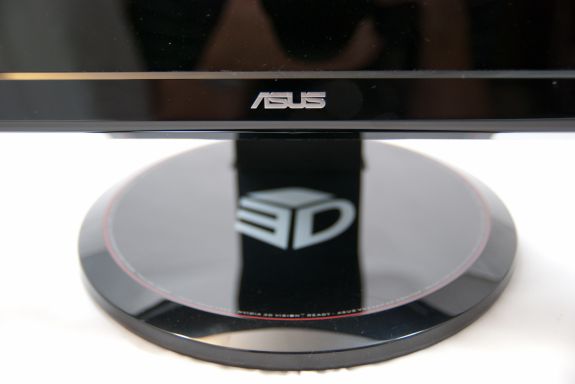ASUS VG236H 23-inch 3D Display Review: 120Hz is the Future
by Brian Klug on August 7, 2010 2:48 AM ESTIntroduction
120Hz panels are definitely still market newcomers - in fact, look no further than Newegg, where there still isn’t a 120Hz category, much less a refresh rate field for drilling down products. The necessity for 120Hz panels arose entirely out of the ongoing 3D obsession across the entire consumer electronics segment, something that remains a difficult sell for many gamers. On a technical level, the necessity for 120Hz arises from the need to drive two discrete 60Hz images - one 60Hz image for each eye. In its current incarnation, consumer 3D technology relies primarily on active shutter glasses - parallax barrier 3D displays are still too expensive, and I’ve yet to see passive polarization methods used outside the movie theatre. But you probably already know most of the 3D story.
Though the 120Hz refresh frequency does make games playable in 3D, there’s another important benefit of using a faster refresh rate - everything looks smoother, and you can now drive up to 120 FPS without tearing. The ASUS VG236H was my first exposure to 120Hz refresh displays that aren’t CRTs, and the difference is about as subtle as a dump truck driving through your living room. I spent the first half hour seriously just dragging windows back and forth across the desktop - from a 120Hz display to a 60Hz, stunned at how smooth and different 120Hz was. Yeah, it’s that different.
If you’re the kind of person that cares about squeezing every last FPS out of your box - regardless of how you feel about 3D - don’t even bother reading the rest of this review, just run, don’t walk, to the store and get this 120Hz display. I’m serious.
ASUS’ VG236H isn’t perfect, like any product there are a few caveats. That aside, honestly, the completely unparalleled level of smoothness on a 120 Hz display has made me hyper attuned to just how flickery 60Hz looks on all the other LCDs I’ve got.
Oh and my initial skepticism about 3D? I’m still shocked about it, but I've completely changed my mind.
Let’s dive into this review.











121 Comments
View All Comments
killerclick - Saturday, August 7, 2010 - link
Stop trying to push these stupid fads, I'm not buying 3D! Ever!Etern205 - Saturday, August 7, 2010 - link
3D monitors are just regular LCD screens which support up to 120Hz. Enabling 3D requires those special glasses and it's entirely up to you whether you want to enable it or not.There is not such thing as a 3D monitor as if there is, then you will need to wear the glasses every single time you use it.
And imo, that 3D logo on the stand looks hideous. Much like a ricer who puts sticker of tuners just to make it look cool or something.
Iketh - Saturday, August 7, 2010 - link
... but don't change the camera perspective when taking comparitive photos. The height adjustment images don't help a bit. Leave the camera in the same position for both.Etern205 - Saturday, August 7, 2010 - link
I thought all monitors are "3D" ?:P
smookyolo - Sunday, August 8, 2010 - link
That's what they'd like you to think, yes ;)dingetje - Sunday, August 8, 2010 - link
yes, and the old crt's are even more 3D than the new technology ;)HDPeeT - Saturday, August 7, 2010 - link
Thanks for the great review! I'm glad to see that there are professional sites out there that appreciate the advantages 120hz displays bring to the table besides just the 3D stuff.I know, I know, there are plenty of people out there that are really excited about 3D gaming and movies, but for me, it's all about the faster refresh and (hopefully) lower input lag.
The one thing I'm little confused about is how you reached the conclusion that the display has 3.9ms of lag. When you say "The VG236H consistently lags 1 frame from the FP241W.", wouldn't this imply that it has at least ~8ms of lag at a 120hz refresh (or even 16ms at 60hz (still not clear on that)?
Mumrik - Saturday, August 7, 2010 - link
Page 1: "On a technical level, the necessity for 120Hz arises from the need to drive two 60Hz images for each eye."That would take 240hz. You mean ONE 60Hz image for each eye.
cactusdog - Saturday, August 7, 2010 - link
Brian, Do you see the same benefits (of smoother motion on the desktop) when the VG236H is set to 60Hz?7Enigma - Monday, August 9, 2010 - link
Good question. The obvious answer is no, but I agree it should quickly be tested.